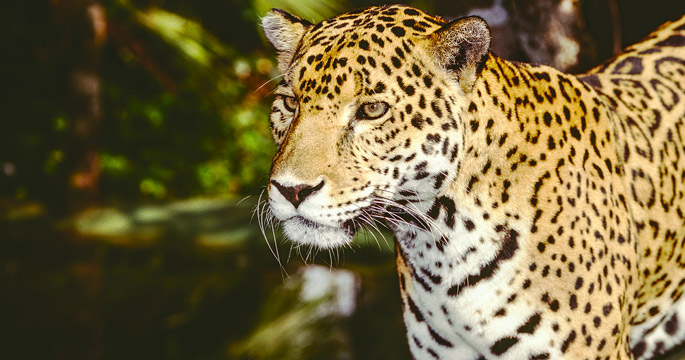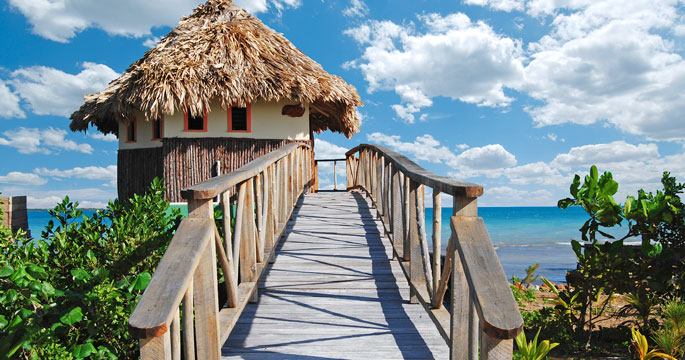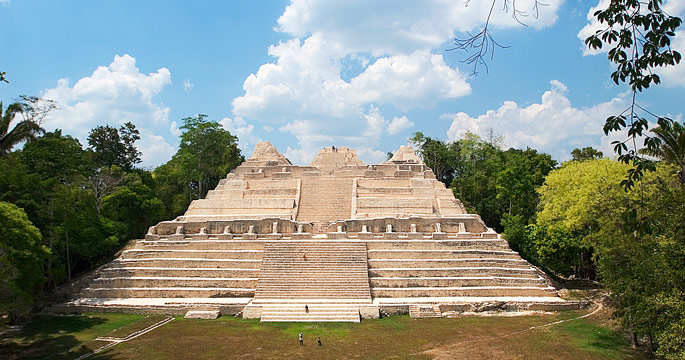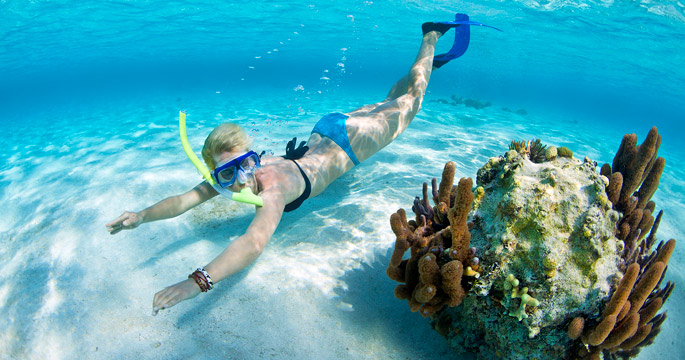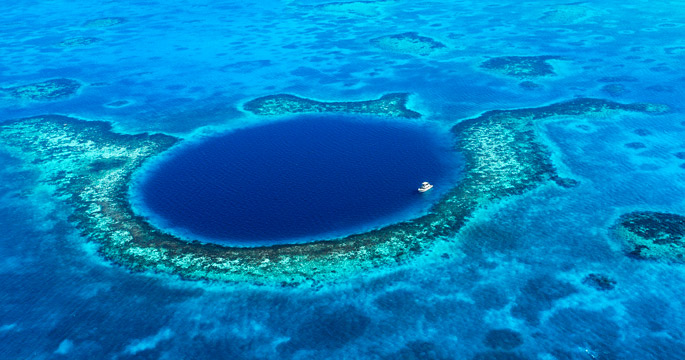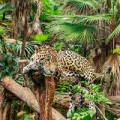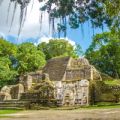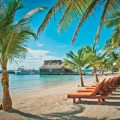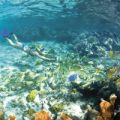Indiana Jones would feel right at home in Belize. There are jungle rivers to paddle, ancient ruins to discover and mysterious caves to explore. But move to the coast and you’ll transition to the realm of Jimmy Buffett, where water taxis and golf carts are the primary form of motorized transportation, the beach is never more than a coconut toss away, and flip-flops and a T-shirt are the universal dress code. Belize is the Caribbean at its most natural, and there are a lot of reasons why we love this small, friendly Central American country.
1 Islands Aplenty
The Mezoamerican barrier reef runs the length of the coast of Belize. Between it and the mainland lie a collection of hundreds of small islands, known locally as Cayes. The largest, Ambergris, is home to a collection of small to mid-size resort properties. Others offer low-key lodging or remote fishing and diving outposts, while many more remain sparely populated or completely uninhabited. This creates a playground for sailors, paddlers and the adventurers, who can live out Robinson Crusoe fantasies on one of the last pristine coastlines in Central America.
2 Ancient Origins
As archeologists continue to peel back the enveloping jungle, once-majestic stone edifices of the Mayan empire are revealed at sites such as Caracol. Most all are open to the public, allowing imaginative visitors to walk in the footsteps of feather-clad warriors and stand at carved altars where painted priests once offered up sacrifices to their gods. More than 15 centuries after its completion, Caracol’s central pyramid, once known as the Sky Palace, remains the country’s tallest man-made structure.
3 Room to Roam
Belize is the least populated country in Central America, both in terms of human density and the total number of people. Though roughly the same size as El Salvador, it has one-twentieth the inhabitants—just over 350,000 residents. About a third of the population lives in Belize City and another third in five other mid-size towns. This leaves vast areas of the country either devoted to small farms or in a natural state.
4 Offshore Atolls
Most people associate coral atolls with the South Pacific, but there are actually four in the Caribbean, and three of them are found off the coast of Belize: Glovers, Lighthouse and Turneffe. Unlike the cayes, which sit in the shallows behind the reef, the atolls rise from deep blue water, with sheltered lagoons enclosed within coral ramparts. Most of these atolls are now wildlife sanctuaries, but all are accessible and can be reached by boat. A highlight for many visitors is the famous Blue Hole on Lighthouse Reef, which is the largest of its kind.
5 Jungle Lodge or Eco-Luxe
Hidden among the lush greenery of Belize’s interior are a number of lodges with an eco-ethos. Those seeking simplicity and back-to-nature authenticity can bed down in a riverside palapa, with little more than a mosquito net and kerosene lantern in the way of amenities. At the other end of the spectrum, renowned properties such as the Lodge at Chaa Creek provide a unique brand of “thatched-roof luxury,” combining native architecture with designer touches and mating sustainable practices, such as solar power and locally sourced menus, with upscale amenities like on-site spas and en suite hot tubs.
6 United in Diversity
Belize is one of the most culturally diverse nations in the Western Hemisphere. Its peoples and cultures represent a mingling of Mayan heritage with Spanish, West African, British and American cultures, plus sprinklings of Chinese, Middle Eastern, Caribbean and German Mennonite cultures. English is the official language, and all a traveler needs. But in market squares or coastal landings, you are equally as likely to hear Spanish and a smattering of local dialects such as Kriol, Garifuna or Kekchí.
7 Half Wild
About half of Belize remains covered in forests, ranging from coastal mangrove swamps to dense rainforests and upland pine woods. More than 80 percent of the country’s rainforests are protected, along with many other critical wildlife habitats, which are home to a diverse collection of birds, reptiles and mammals such as the black howler monkey. There are a total of 24 forest reserves, wildlife sanctuaries and marine parks in Belize, covering both land and sea. Together, they encompass the region’s greatest range of bio-diversity.
8 Common Courtesy
Cultural and ethnic tensions are non-existent in this mixing-pot nation. Belizeans are known for their relaxed attitudes, enjoyment of good conversation and appreciation for the everyday courtesies. They are quick to offer a “good morning” or “good afternoon” in passing, and are rarely shy about striking up a conversation with anyone who takes the time to stop and chat, or ask a question.
9 Where the Jaguars Roam
The Cockscomb Basin Wildlife Sanctuary is the world’s first and largest jaguar preserve. It is estimated that more than 80 members of the world’s third-largest cat family roam these 128,000 acres of pristine jungle. The sanctuary is also home to Belize’s other four species of cat—puma, margay, jaguarundi and ocelot—along with the endangered Baird’s tapir and more than 290 species of birds.
10 Cave Country
The foothills and mountains of Belize are riddled with caves and caverns— and don’t think small, crawl-in-the-dark crevices. Some, like Rio Frio, have arching entrances six stories high, while a number of the river caves can be navigated by canoe or astraddle an inner tube. For a more mystic experience, visit Actun Tunichil Muknal, aka the Cave of the Crystal Sepulcher, where the calcified remains of an ancient maiden shimmer like crystal under the beam of a flashlight.

